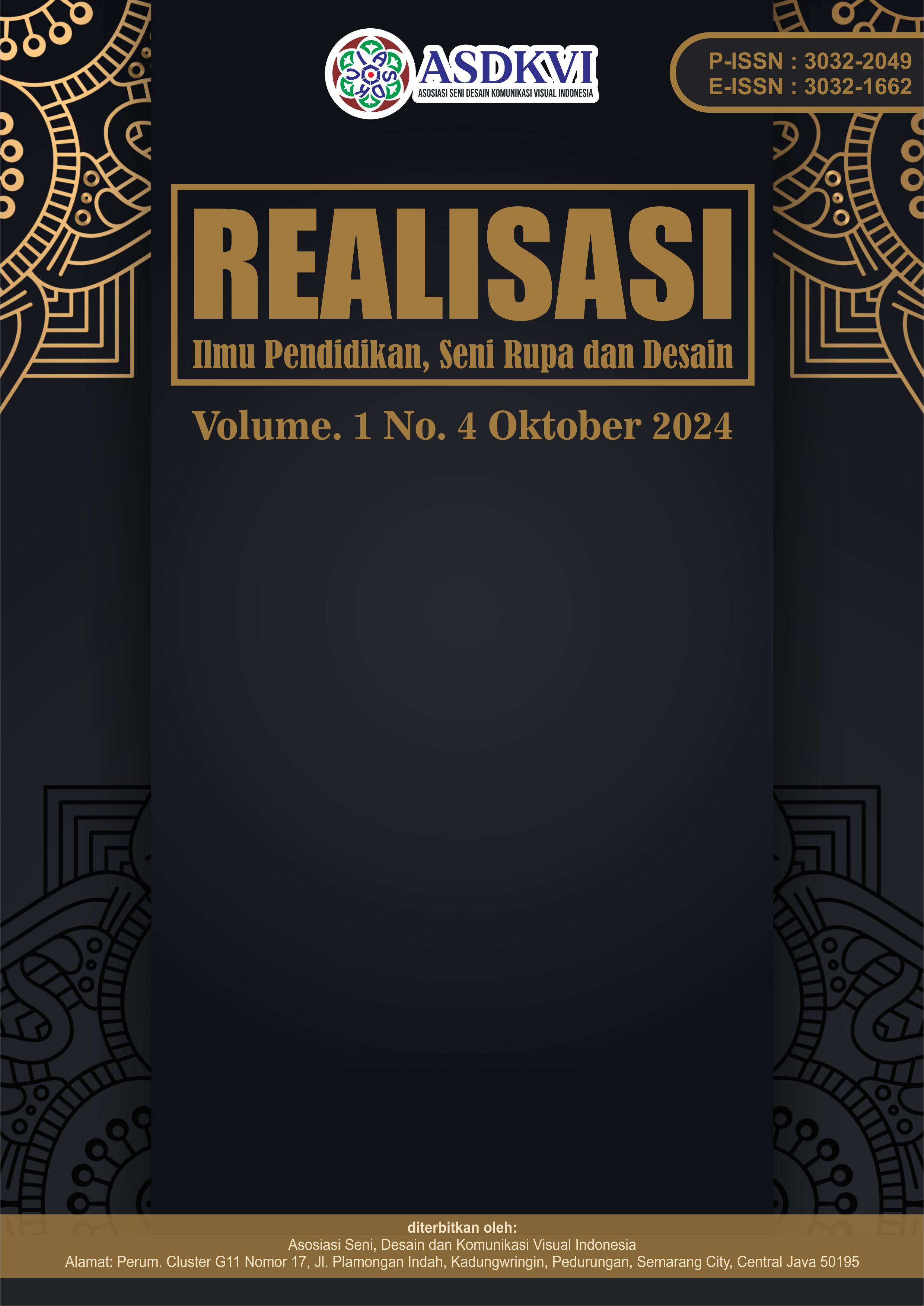Upaya Meningkatkan Hasil Belajar IPA Siswa Kelas V SDN 104252 Sei Tuan Dengan Menggunakan Media Komputer Pada Materi Benda dan Wujudnya
DOI:
https://doi.org/10.62383/realisasi.v1i4.377Keywords:
Computer Media, Learning Outcomes, Material objectsAbstract
This type of research is classroom action research, which consists of 4 stages, namely planning, implementing, observing and reflecting. Based on the results of the study it can be concluded that of the 20 students only 5 students (25%) have completed the writing skills of Indonesian language lessons, and 15 students are still not finished. Based on the results of the initial test, the researcher took action using the Picture and Picture learning model in the first cycle of the first meeting, the results obtained by student observations were (48.35%) at the second meeting of the first cycle, the results obtained were student observations (50.23%) These observations obtained an average value of (49.29) and classified as Low. In addition to student observations, teacher observations were also carried out in cycle I and obtained a value of (61.11%) at the first meeting, (76.38%) at the second meeting, from the results of teacher observations obtained an average observation of (68.74%) %) and is quite good. Based on the data from cycle I, the value is still not good, so the researcher continues the action in cycle II. At the first meeting in the second cycle the results of student observations were (80.15%) and at the second meeting the results of student observations were (80.65%), from the two observations, the average result of student observations was (80, 4%). And classified as complete. The results of teacher observations in the second cycle of the first meeting obtained (84.72%) and (88.88%) results at the second meeting of the data obtained that the average value of teacher observations was (86.8%) and classified as high. After the end of the actions in cycle I and cycle II, the researcher again gave Writing Skills Tests to the students and the results were that from 20 students 16 students (80%) were included in the improved and complete category, while 4 students (20%) were still classified as in the incomplete and non-increasing category.
References
Abdul Sada, R. A. (2015). Penelitian tindakan kelas. Bandung: Citapustaka Media.
Anitah, S. (2007). Strategi pembelajaran di SD. Jakarta: Universitas Terbuka.
Aqib, Z. (2009). Penelitian tindakan kelas. Bandung: CV. Irama Widya.
Arends, R. I. (2008). Learning to teach (7th ed., Vol. 2). Yogyakarta: Pustaka Pelajar.
Arikunto, S. (2002). Dasar-dasar evaluasi pendidikan (Edisi Revisi). Jakarta: Penerbit Bumi Aksara.
Arikunto, S. (2006). Penelitian tindakan kelas. Jakarta: Bumi Aksara.
Dahar, R. W. (1989). Teori-teori belajar. Jakarta: Erlangga.
Dimyati, M., & Mudjiono. (2002). Strategi belajar mengajar. Jakarta: Rineka Cipta.
Djamarah, S. B., & Aswin, S. (2002). Strategi belajar mengajar. Jakarta: Rineka Cipta.
Djumhana, N. (2009). Pembelajaran Ilmu Pengetahuan Alam. Jakarta: Direktorat Jenderal Pendidikan Islam, Departemen Agama Republik Indonesia.
Elvis, E. (2010). Developing reasoning skills and problem solving through problem-based learning. Jurnal Pendidikan Matematika Paradikma, Program Pascasarjana Unimed.
Fahrurozi. (2010). Penerapan model pembelajaran kooperatif tipe Jigsaw melalui pembelajaran aktif, kreatif, efektif dan menyenangkan untuk meningkatkan hasil belajar IPA dan kecakapan sosial siswa kelas IV B SD-1 Al-Azhar Medan (Tesis). Medan: Program Pascasarjana Unimed.
Indrawati, M., & Setiawan, W. (2009). Pembelajaran aktif, kreatif, efektif, dan menyenangkan [PDF]. Jakarta: Pusat Pengembangan dan Pemberdayaan Pendidik dan Tenaga Kependidikan Ilmu Pengetahuan Alam (PPPPTK IPA).
Joyce, B. (2009). Models of teaching: Model-model pengajaran. Yogyakarta: Pustaka Pelajar.
Keysar, P. (2010). Peran komputer di dalam proses belajar. Jurnal Teknologi Pendidikan, Program Pascasarjana Unimed.
Kunandar. (2008). Langkah mudah penelitian tindakan kelas. Jakarta: PT. Raja Grafindo Persada.
Kuncahyono. (2017). Analisis penerapan media berbasis komputer pada pembelajaran tematik terpadu di sekolah dasar. Jurnal Pemikiran dan Pengembangan SD, 5(2), September 2017. Retrieved from http://eprints.umm.ac.id.
Kusumah, W. (2009). Penelitian tindakan kelas. Jakarta: PT Indeks.
Mariana, A. I. M., & Praginda, W. (2009). Hakikat IPA dan pendidikan IPA untuk guru SD. Jakarta: P4TK IPA.
Mas’ud, A. (2009). Pembelajaran aktif, inovatif, kreatif, efektif dan menyenangkan (PAIKEM). Jurnal Pendidikan [Online]. Retrieved from http://abdundari.blogspot.com.
Masudin. (2010). Hakikat pembelajaran IPA. Artikel Pendidikan [Online]. Retrieved from http://edunet-mts.blogspot.com//hakikat-pembelajaran-ipa.html.
Muijs, D., & Reynolds, D. (2008). Effective teaching. Yogyakarta: Pustaka Pelajar.
Paul, R. (1997). Filsafat konstruktivisme dalam pendidikan. Yogyakarta: Kanisius.
Sadiman, A. (2008). Media pendidikan. Jakarta: PT Raja Grafindo Persada.
Sanjaya, W. (2006). Strategi pembelajaran. Jakarta: Kencana Prenanda Media Group.
Slameto. (2003). Belajar dan faktor-faktor yang mempengaruhi. Jakarta: Penerbit Rineka Cipta.
Sulistyorini, S. (2007). Model pembelajaran IPA sekolah dasar. Semarang: FKIP Unnes dan Tiara Wacana.
Supriyono. (2018). Pentingnya media pembelajaran untuk meningkatkan minat belajar siswa SD. EduStream: Jurnal Pendidikan Dasar, 2(1), Mei 2018. Retrieved from http://journal.unesa.ac.id/index.php/jpd.
Tabrani, R. (1992). Pendekatan dalam proses belajar mengajar. Bandung: PT Remaja Rosdakarya.
Wikipedia. (2010). Ilmu pengetahuan alam [Online]. Retrieved from http://id.wikipedia.org/wiki/Ilmu_Pengetahuan_Alam.
Downloads
Published
How to Cite
Issue
Section
License
Copyright (c) 2024 Realisasi : Ilmu Pendidikan, Seni Rupa dan Desain

This work is licensed under a Creative Commons Attribution-ShareAlike 4.0 International License.





